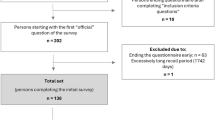Abstract.
For influenza monitoring, the use of laboratory data usually in combination with morbidity data from primary care facilities is common. The estimated excess morbidity, or resulting rates and consultation incidences are the basic parameter for the estimation of influenza activity in conjunction with antigen assays of influenza in a selected sub-sample of the recorded patients. The interpretation of such data is complicated by several selection processes, confounding influences and bias. The case definition (CD) given for the selection of cases is important for the sensitivity and specificity of the registrations. For the clinical morbidity data, the lower specificity found when more general (acute respiratory tract infections) criteria are used seems to be compensated by a higher statistical sensitivity due to the larger number of cases. The relative stability of the background morbidity against the expected values is critical for the interpretation. The sub-sample of patients tested by antigen assays is usually small due to cost constraints. Testing all patients with the defined symptoms in a sub-sample of practices is rarely possible because of the workload in the GPs offices during an influenza epidemic but does allow the number of positives to be used as an indicator. Usually, a sub-sample of GPs is asked to test a limited number of patients suffering with the symptoms given as selection criteria. In this case, the rate of positives is the better indicator for the influenza activity. However, the low number of tests particularly when flu is circulating at a low level limits the statistical sensitivity of this parameter. The specificity of the criteria given for the selection of patients being swabbed and the sensitivity of the test largely determine the function between the rate of positives and the influenza activity. The virological results are mostly interpreted in a more qualitative way, to see if influenza is circulating significantly. For this interpretation, more specific selection criteria (CD) seem useful and a high sensitivity for an increasing circulation can be expected.
Similar content being viewed by others
Author information
Authors and Affiliations
Additional information
Electronic Publication
Rights and permissions
About this article
Cite this article
Uphoff, .H., Cohen, .J. Some aspects regarding the interpretation of influenza surveillance data. Med Microbiol Immunol 191, 145–149 (2002). https://doi.org/10.1007/s00430-002-0135-0
Received:
Issue Date:
DOI: https://doi.org/10.1007/s00430-002-0135-0




